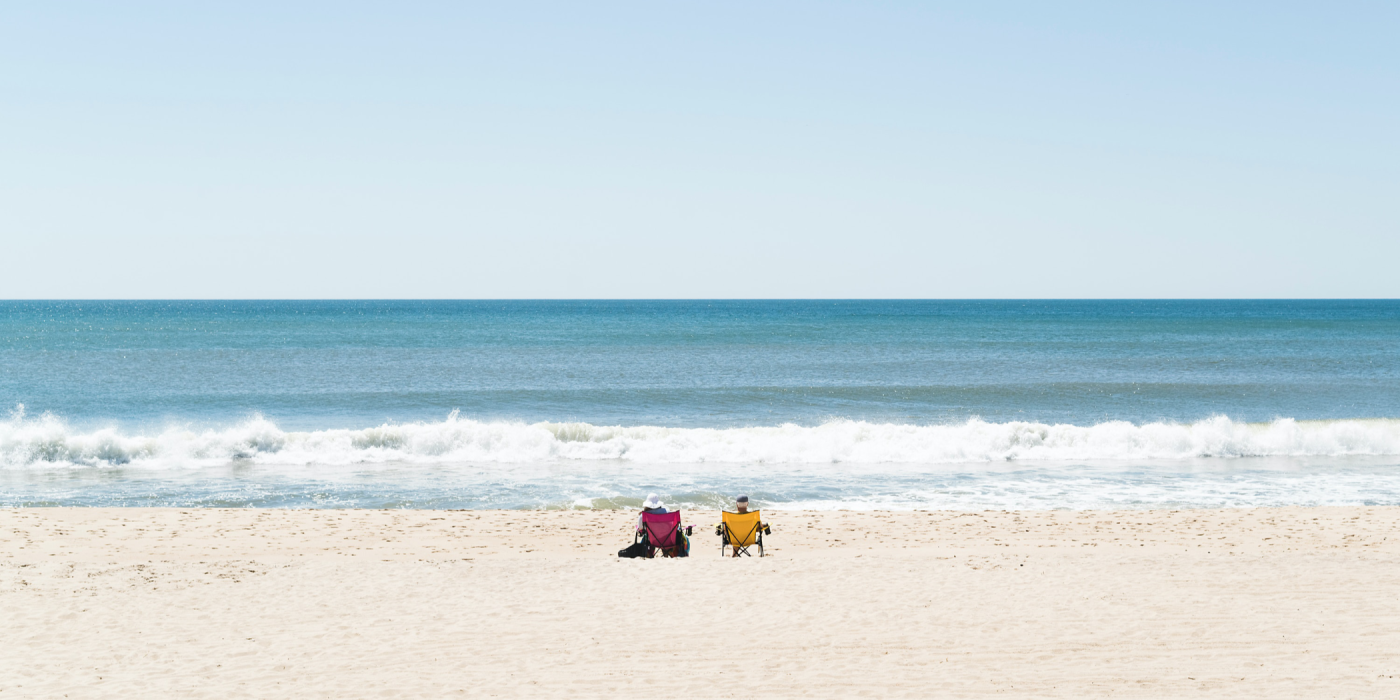Calming Currents: Unravelling the Scientific Connection Between Water and Relaxation

From the gentle lapping of waves at the seashore to the immersive warmth of a hot bath, water has long been associated with a sense of tranquillity and relaxation. Its soothing qualities are intrinsic to numerous elements of our lives, whether it's the calming rhythm of raindrops on a window pane, the serene view of a peaceful lake, or the therapeutic benefits of a swim. The presence of water, in its many forms, has an undeniable ability to calm, comfort, and rejuvenate.
Humans have recognised these benefits for centuries, incorporating water into various relaxation and healing practices. Today, this ancient understanding is supported by a growing body of scientific evidence, revealing the physiological and psychological mechanisms that make water such a potent source of relaxation. From influencing our brain waves to alleviating physical stress, the interplay between water and our bodies offers fascinating insights.
In this article, we delve into the heart of this relationship between water and relaxation. We'll journey through the science that elucidates how water, whether through immersion, its sight, or its sound, can profoundly influence our sense of calm and well-being.
We'll explore the physiological response of our bodies to water and how it aids in inducing a relaxed state. We'll also delve into the impacts of water on our brains, the soothing effects of water sounds, and the practical application of this knowledge through water therapies. By understanding these connections, we can more effectively harness the calming power of water in our day-to-day lives, turning knowledge into tranquillity.
The Physiological Effects of Water on the Body
How the Body Responds to Water
When we immerse ourselves in water, our body experiences several physiological changes that stem from the unique properties of this life-giving liquid. One of the most noticeable sensations is buoyancy. This force counteracts gravity, reducing our effective weight when submerged. As a result, our joints and muscles experience less strain, leading to a feeling of lightness and freedom of movement.
Simultaneously, we experience the effects of hydrostatic pressure—the pressure exerted by the water on our bodies. This pressure increases with depth, compressing our bodies and aiding blood circulation. Improved blood flow delivers oxygen and nutrients more efficiently to our muscles, reducing fatigue and promoting relaxation.
Thermal regulation is another key aspect. Warm water helps maintain body temperature, leading to muscle relaxation and dilation of blood vessels, further enhancing circulation. On the other hand, cool water can stimulate and invigorate the body, improving alertness.
Water’s Role in Inducing Relaxation
The cumulative impact of buoyancy, hydrostatic pressure, and thermal regulation creates a soothing environment for the body. The reduction of strain on joints and muscles, the increased circulation, and the regulated body temperature work in unison, promoting a state of physical relaxation.
Moreover, the natural rhythm of water can synchronise with our body's rhythms, such as breath and heart rate, leading to a deeper sense of calm and well-being. These factors contribute to water's remarkable capacity to induce a state of relaxation, which has been recognised and harnessed in various water therapy practices.
Water and the Human Brain: The Science Unveiled
Psychological Response to Water
The intersection between water and psychology is a fascinating subject of study. Research has demonstrated that exposure to water, be it immersion, touch, or even just the sight of water, can stimulate a positive psychological response. For instance, when we submerge ourselves in water, our body responds by releasing endorphins, our natural 'feel-good' hormones, which can foster a sense of happiness and relaxation.
Simultaneously, being around water can contribute to a reduction in cortisol levels, the hormone typically associated with stress. This drop in cortisol is a further testament to the relaxing and therapeutic effects that water can have on our mental state, helping to mitigate the stressors of our daily life and promote an overall sense of tranquillity.
The 'Blue Mind' Theory
To delve deeper into the relationship between water and our mental wellbeing, we turn to the concept of the 'Blue Mind' theory. Coined by marine biologist Wallace J. Nichols, the 'Blue Mind' theory postulates that being near, in, on, or under water can make us happier, healthier, more connected, and better at what we do. It explores how water environments engage the brain in a distinctly different way, triggering a sense of calm, allowing for introspection, and ultimately cultivating a state of mindful relaxation. This theory cements water's reputation as not only a vital resource for our physical survival but also as a significant component of our psychological wellbeing.
The Influence of Water Sounds on Relaxation
The Soothing Cadence of Water
The influence of water extends beyond its physical properties. A pivotal aspect of this is the sound of water, with its rhythmic ebbs and flows. But why does this natural symphony have such a calming effect on us?
The answer lies within our brainwaves. When we are active and alert, our brains primarily operate in the Beta wave frequency. As we start to relax and quieten the mind, we transition into Alpha wave dominance, which is associated with relaxation and a meditative state.
Scientific studies have shown that the soft, consistent sound of water, such as that of a gently babbling brook or waves lapping against the shore, can help induce this shift to Alpha wave activity. The auditory system is engaged by these gentle, non-threatening sounds, which can help to distract the mind from disruptive thoughts and promote a state of calm.
Scientific Evidence
In a study published in the journal Scientific Reports, researchers found that nature sounds, including those of water, had a physiological impact on listeners. Participants' heart rates lowered, and their parasympathetic nervous system - responsible for relaxation and digestion - became more active. In contrast, their sympathetic nervous system - which responds to stress - became less active.
Similarly, a research study from Brighton and Sussex Medical School indicated that natural sounds like flowing water led to brain connectivity associated with outward-focused attention, a state opposite to inward-focused anxiety and stress.
These studies highlight the calming influence of water sounds, providing tangible evidence of their role in promoting relaxation and reducing stress.
Water Therapy: Harnessing the Relaxing Power of Water
An Introduction to Water Therapy Techniques
Water therapy, an ancient practice seen across various cultures, has long been recognised for its therapeutic benefits. In modern times, this takes shape in various forms, with hydrotherapy and flotation therapy being among the most prevalent.
Hydrotherapy encompasses a range of treatments, including water jets, underwater massage, mineral baths, and hot tubs. These methods exploit the physical properties of water, such as temperature and pressure, to stimulate the body's healing processes and promote relaxation.
Flotation therapy, also known as sensory deprivation or float therapy, involves lying in a tank filled with highly concentrated Epsom salt water. The high buoyancy allows you to float effortlessly, creating a sensation of weightlessness.
The Science Behind Water Therapy's Relaxing Effects
These therapies are not just relaxing due to the simple pleasure of being in or around water; they rely on the scientific principles we've explored.
When immersed in water, buoyancy reduces the strain on our bodies, helping muscles to relax, while hydrostatic pressure aids blood circulation, further easing physical tension. Flotation therapy, in its unique approach, provides an environment with minimal sensory input, encouraging a deeply meditative state and facilitating a shift towards slower, theta brainwaves, often associated with relaxation and creativity.
Hydrotherapy's use of warm water also plays a role, as heat can help to soothe muscular discomfort and stimulate the release of endorphins, our body's natural 'feel-good' chemicals. These physiological responses, coupled with the psychological tranquillity promoted by the gentle sound of water, create an environment conducive to profound relaxation.
In essence, water therapy techniques are practical applications of the relaxing effects of water, grounding abstract scientific principles in tangible, accessible forms.
A Parting Ripple of Encouragement
Throughout this exploration of water's relationship with relaxation, we've navigated an ocean of fascinating scientific insights. Initially, we dipped our toes into the physiological effects of water, discussing how elements such as buoyancy, hydrostatic pressure, and thermal regulation promote a state of relaxation in the body.
We then plunged deeper to explore the psychological impact of water. Here, we delved into the transformative effect of water on the human brain, noting how it triggers the release of endorphins, reduces cortisol levels, and underpins the 'blue mind' theory - the idea that being in, near, or under water can induce a calming effect on our psyche.
We then flowed into the realm of auditory impact, exploring the science behind the tranquilising power of water sounds. We highlighted how these sounds influence our brain waves, leading to a state of relaxation and mental tranquillity.
Lastly, we entered the practical waters of water therapy techniques, such as hydrotherapy and flotation therapy. We revealed how these therapeutic practices utilise water's scientifically proven relaxing properties to promote well-being and ease stress.
In our fast-paced, stress-prone world, embracing the natural soothing abilities of water can provide a profound source of relaxation. Whether it's through immersion, listening to its calming rhythms, or engaging in water therapy, the peaceful properties of water are within your reach. Allow this natural elixir to become a part of your daily life, and see how it can help you sail more serenely through the waves of life.
Related to this article are the following:
I do hope you have enjoyed this article and hope that you will subscribe to my newsletter so you can get the latest information about all things naturally relaxing.
Stay in touch, join the Naturally Relaxing Newsletter
Newsletter Signup
Post Your Comments
or post as a guest
Be the first to comment.
Latest articles in Water
Idea is to do article on waterfall

Finding the Perfect Swimming Hole: Your Comprehensive Guide

Exploring Sea Deities Around the World: A Dive into Global Mythologies

Harvesting Rainwater: A Comprehensive Guide to Rain Barrels and Water Storage

Creating Resilient Gardens: An Expert Guide to Drought-Tolerant Landscaping






